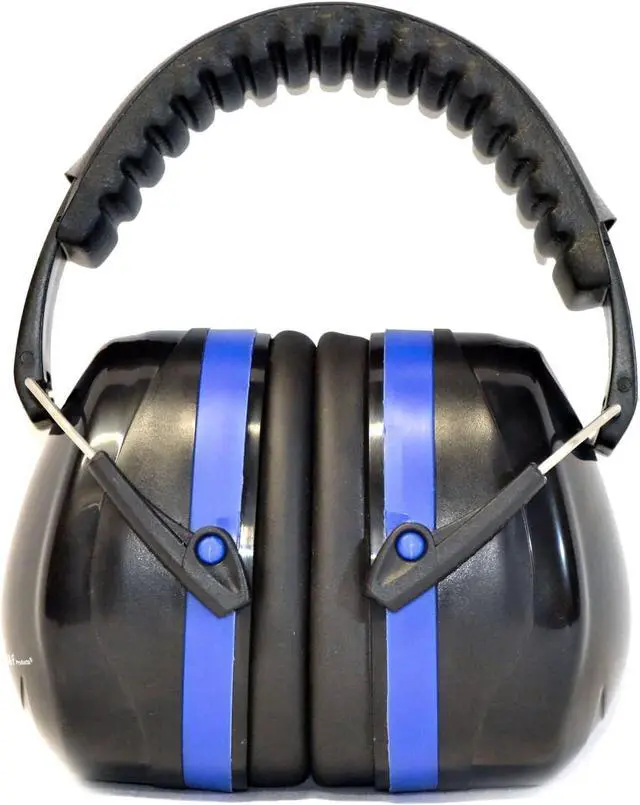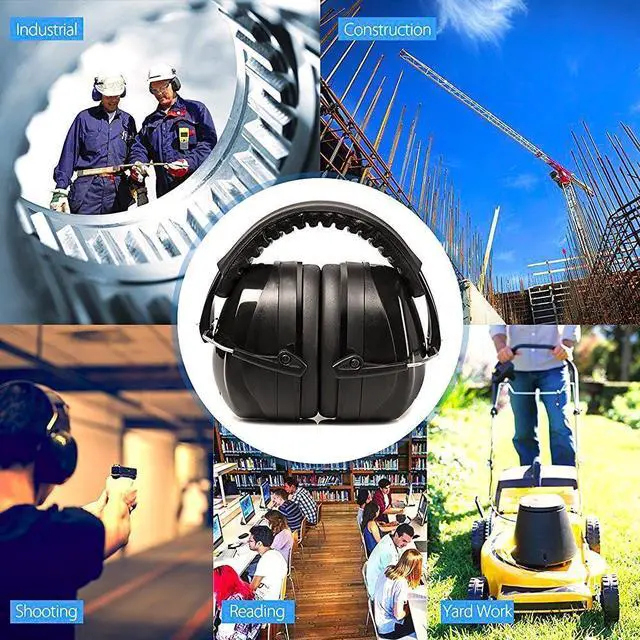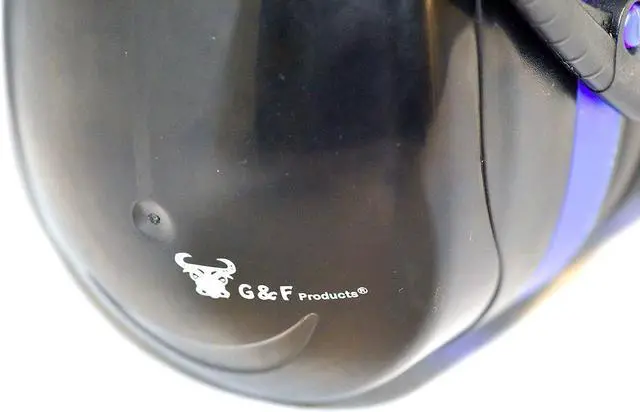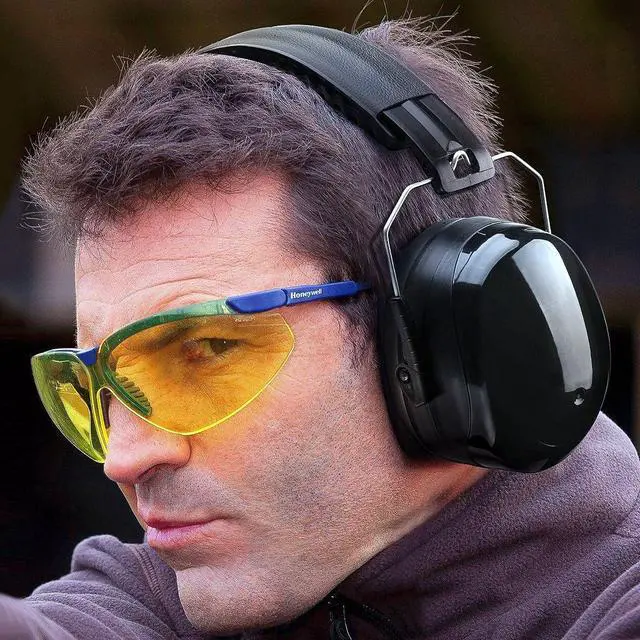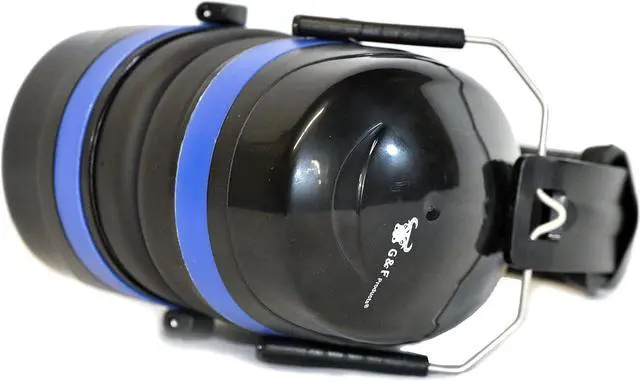
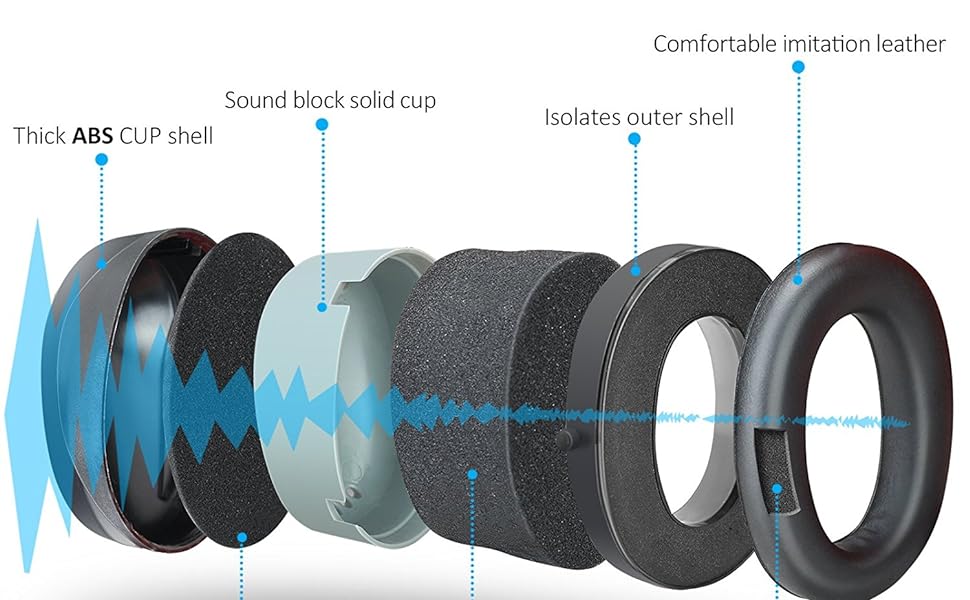
Snug reliable fit - keeps our ear muffs on your head while you are mowing, shooting, operating machinery, doing landscape work, construction, hunting, watching fireworks, NASCAR, sports events, gun ranges, traveling and concerts.
Proprietary technology
. . permanently welds the shell to our engineered Ring - preventing sound leakage into the ear cup.
. . Shell - Engineered to reflect sound off the ear cup (about ¼ inch thick).
. . 6 layers of our proprietary noise-dampening foam that work together to absorb different bands of sound frequencies.
Comfort
. . Our padded headband provides long-wear comfort.
. . The adjustable headband has an additional 1 ¼ inch of vertical adjustment to fit large and small heads.
. . Each cup tilts and swivels for a custom fit.
. . Super Soft foam cushions add comfort and a better seal around your ears.
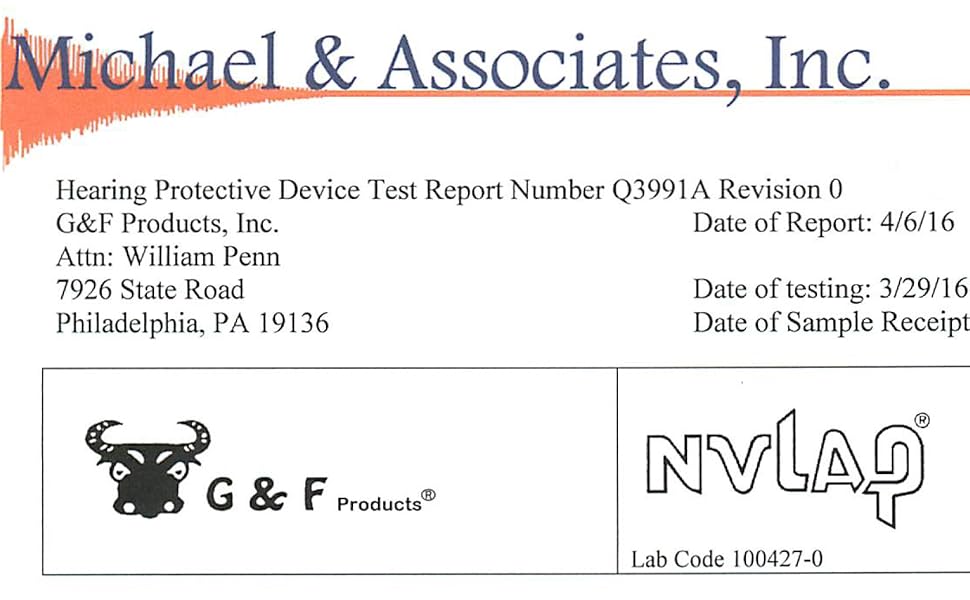
- Certainly, here's the text with the Unicode symbol removed:
- Lab Code 100427-0
Attenuation measurements have been performed according to the American National Standards Institute (ANSI) Specifications, using the experimenter-fit protocol, on the G&F Products Model 12010/BL, 12010/BU earmuff (test ID Q3991A). The specified threshold measurement data were obtained using ten normally-hearing listeners, six male, and four female. These listeners were selected from a standby group of about 35 volunteers who regularly serve as listeners for measurements of this kind.
The measurements were made in a room designed for this purpose. All acoustic characteristics of the room meet the requirements outlined in ANSI. The ambient noise levels in this room are below the limits specified in ANSI, and open ear thresholds are used on a continuing basis to monitor the background noise levels. An automatic recording attenuator was used to record both open and occluded ear thresholds.
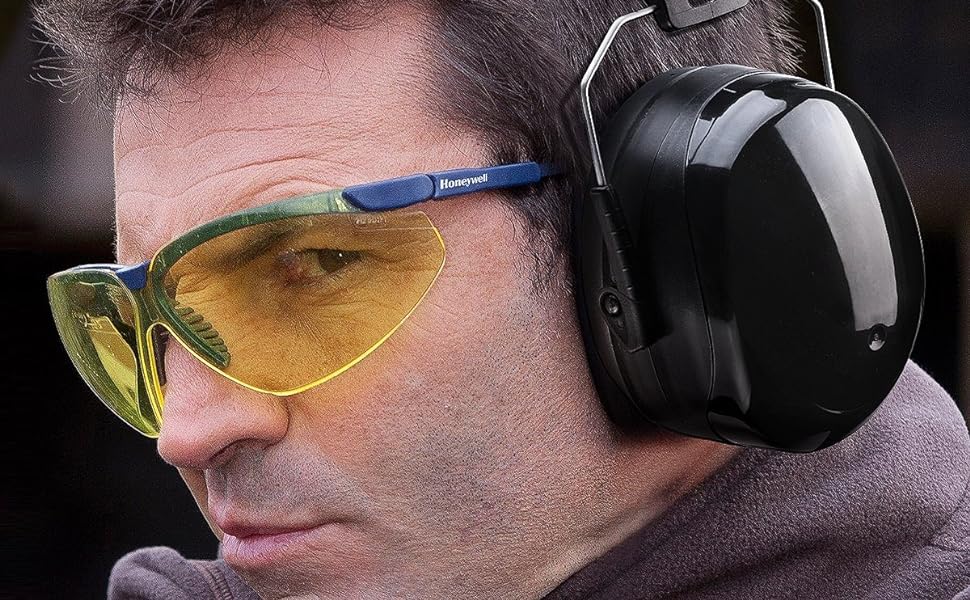
here is the Answer
People should wear a hearing protector if the noise or sound level at the workplace exceeds 85 decibels (A-weighted) or dBA. Hearing protectors reduce the noise exposure level and the risk of hearing loss.
If hearing protection is required, then a complete hearing conservation program should be implemented. A hearing conservation program includes noise assessment, hearing protector selection, employee training, and education, audiometric testing, maintenance, inspection, record keeping, and program evaluation.
The effectiveness of hearing protection is reduced greatly if the hearing protectors do not fit properly, if they are worn only periodically, or if they are removed even for a short period of time. To maintain their effectiveness, hearing protection should not be modified. Radio/music earphones or headsets are not substitutes for hearing protectors and should not be worn where hearing protectors are required to protect against exposure to noise.


